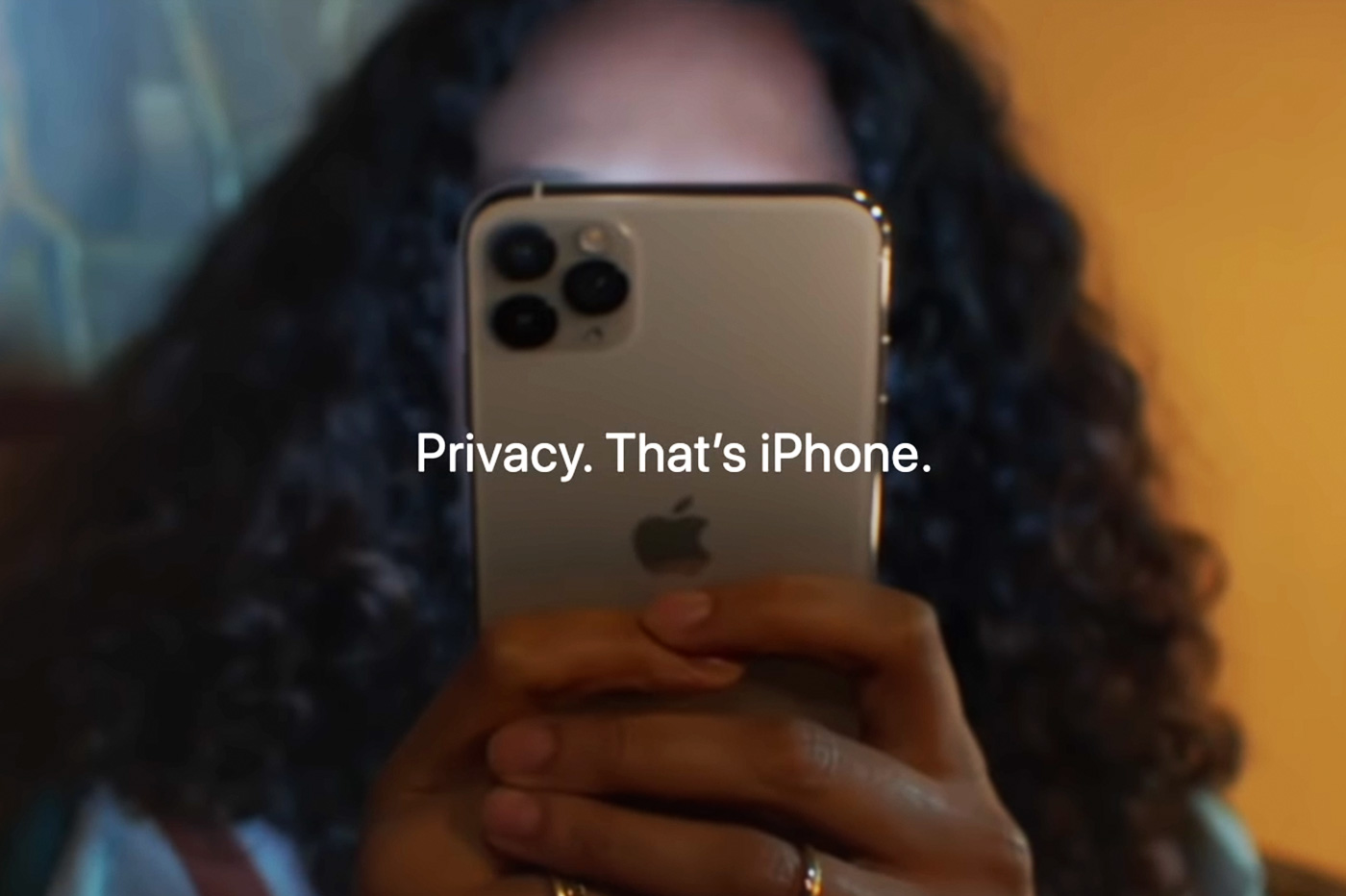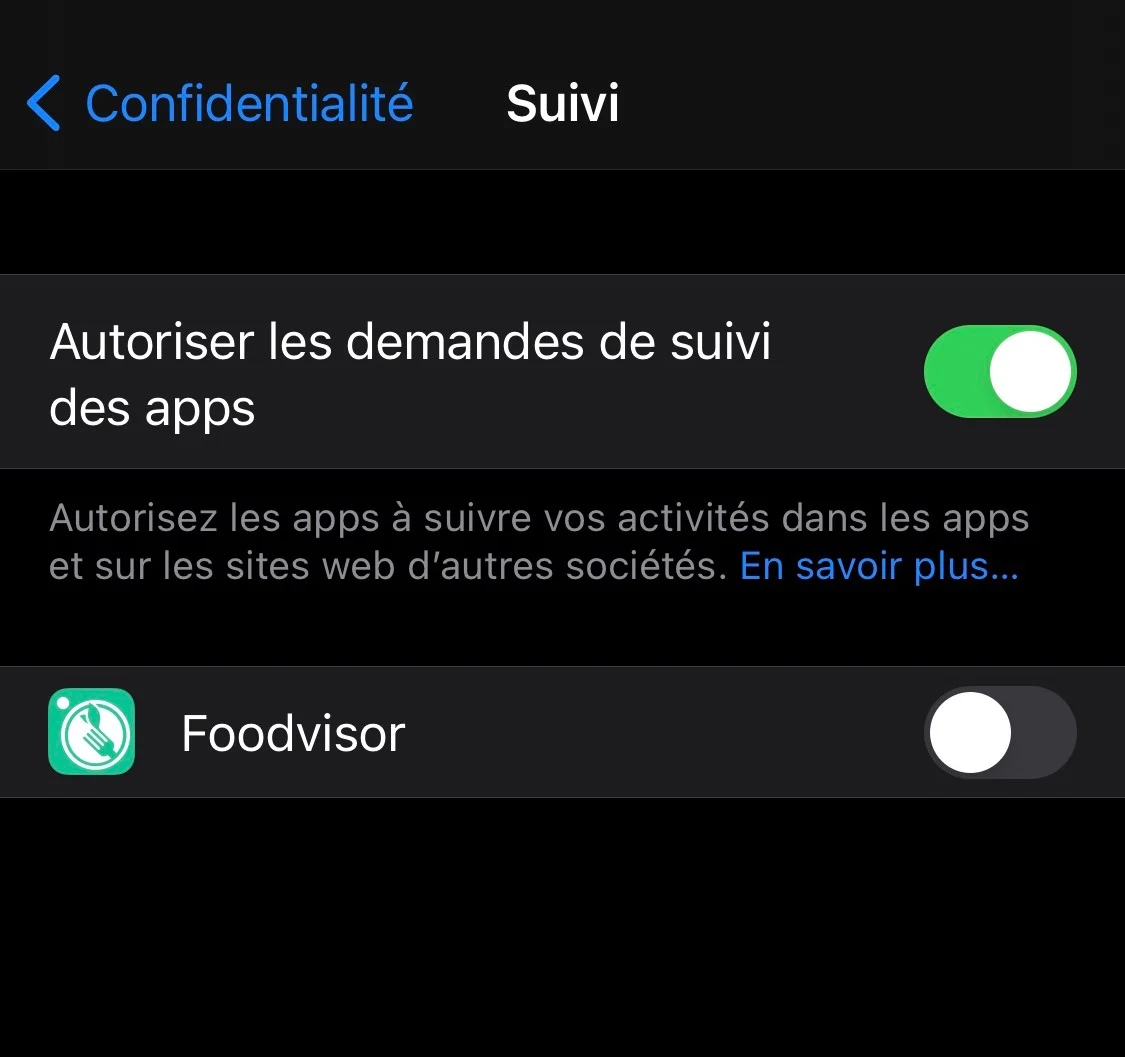The release of iOS 14.5 caused a stir in 2021, since this version of Apple's mobile OS brought a feature intended to better protect the privacy of iPhone users: theApp Tracking Transparency. Under this name, often shortened to “ATT”, hides a thorny subject, that ofpersonalized advertising. Here is our file to understand how this function works: what is its scope, how to activate this ATT and what are the benefits for our privacy? Find the answers to these questions in this special article “confidentiality on iOS”.
You should know that on iOS, any developer has the ability and the right to track user behavior, not only in their own application, but also in other applications installed on the iPhone or iPad. This involves recording information, such as the name of the applications that are used, at what times of the day they are launched, how much time is spent there and what is done there? So an application can know which sites you are going to visit in Safari and at what time, for example.
All this data, which may also include first name, last name and email address in some cases, is grouped together and associated with your device identifier. They can then be used to offer you personalized advertisements (and therefore potentially more profitable given that you are supposed to be more sensitive to them), but also be exchanged with third-party companies, always for advertising targeting purposes.
The App Tracking Transparency introduced by Apple at the beginning of 2021 aims to allow each user to refuse this inter-application tracking, by application. Thus, it is possible either to completely deactivate tracking, or to activate or deactivate it on a case-by-case basis, for certain applications only. The idea is to be able tobetter control the personal data we share. Not everyone wants to allow Facebook or other private information-hungry entity to track our behavior on different applications and websites. And this obviously did not please the main affected, like Facebook, who fear a drop in advertising revenue, which logically becomes less powerful, because less precise with tracking between applications deactivated on the device of the user.
Thanks to App Tracking Transparency, therefore, the user gains incontrol of your personal data. This is part of one of Apple's strategies in recent years, which is to move towards agreater respect for privacy.

© Apple
ATT and iOS: details
A function only available since iOS 14.5? Not really
On versions prior to iOS 14.5, the permission request functionality was already in place. This was particularly the case under iOS 14.4, iOS 14.3 and even iOS 14.2 for certain users.

Sous iOS 14.4 © iPhon.fr
The deployment of ATT took place over several weeks before the release of iOS 14.5 to arrive for everyone around the same time as the release of the new version of the OS, i.e. towards the end of the month from April 2021.
The ATT is therefore notnot exclusive to iOS 14.5, iOS 15 or even iOS 16.If you have an old iPhone or iPad running iOS or iPadOS 14.4 or 14.3, you can also take advantage of it. Note that even on Apple TV, since tvOS 14.5, ATT is there.
Which iPhone and iPad to take advantage of?
To take advantage of ATT and the cross-app tracking request functionality, you must have a device running iOS 14 or newer. Here ishere the list of iPhones that can install iOS 14and andthere that of iPads that can install iPadOS 14.
How does ATT work?
There are two aspects of ATT to understand to be sure you make the right choice for your personal data: general permission and permission by application.
General permission
See you inSettings > Privacy & Security > Tracking. There you have the following option, “Allow app tracking requests”:
- Disabled: the option prevents cross-application tracking for any application, within the framework of the conditions set by Apple (see below on this subject). Another important point is that applications cannot make tracking requests, since tracking is generally disabled
- Enabled: the option allows each application to ask the user for permission to track them
Permission per application
If the option seen above is enabled, each app must ask the user for permission to do cross-app tracking. This is done by opening the application in question, with two answer choices in a pop-up window:
- Ask the app not to track my activities
- Authorize

© iPhon.fr
Once you have authorized or refused tracking, the app in question is listed inSettings > Privacy & Security > Tracking, where the choice can be modified if you change your mind.

© iPhon.fr
Note that disabling the general setting automatically disables any tracking allowed for one or more apps specifically.
What monitoring with the setting activated or deactivated?
As detailed in the ATT Terms of Service, here is what a developer can do with unauthorized cross-app tracking:
- track information between applications and websites if tracking is only on the device and there is no information to identify the user (obtaining user ID or machine ID).
- share information for security or fraud prevention reasons
- share information with a credit bureau
And here is what the developer can do in addition, if tracking is authorized:
- access the device's advertising ID
- combine user or device information with information collected by a third-party service about the same user or device
- share this aggregated information with a third-party service
- use this aggregated information for advertising targeting purposes
- resell this aggregated information
We hope this article has shed some light on App Tracking Transparency. If this is not yet the case,Do not hesitate to ask your questions in comments, we will try to answer them.
Otherwise, for you, tracking is tracking allowed, not allowed, or does it depend on the app?

i-nfo.fr - Official iPhon.fr app
By : Keleops AG






